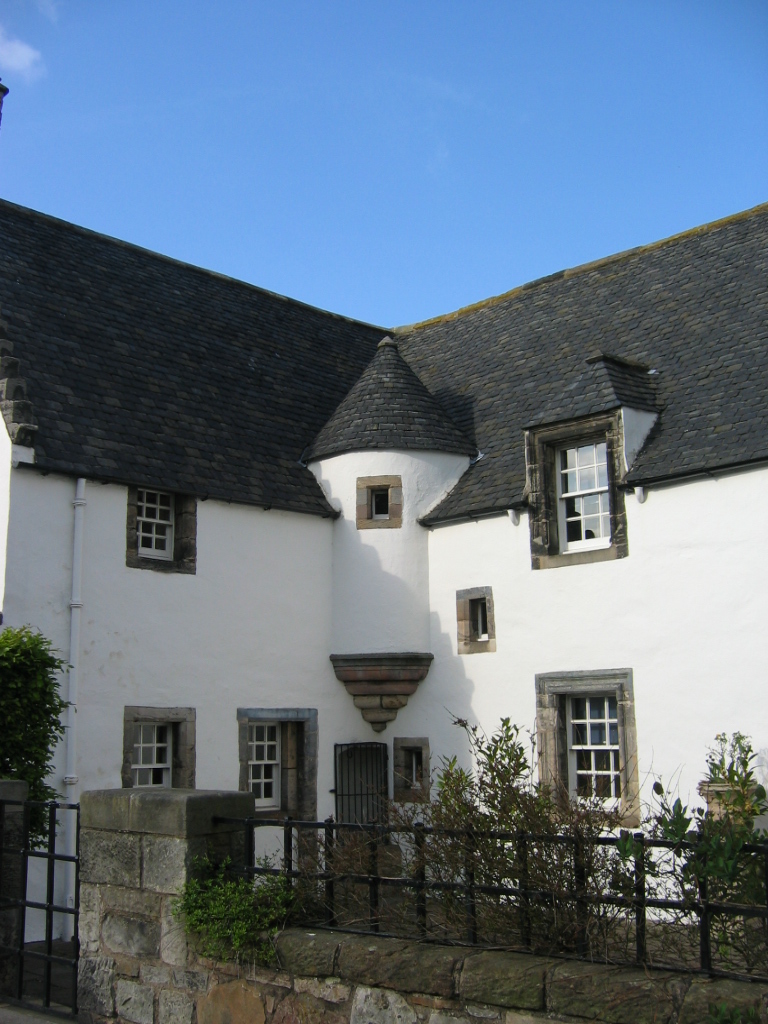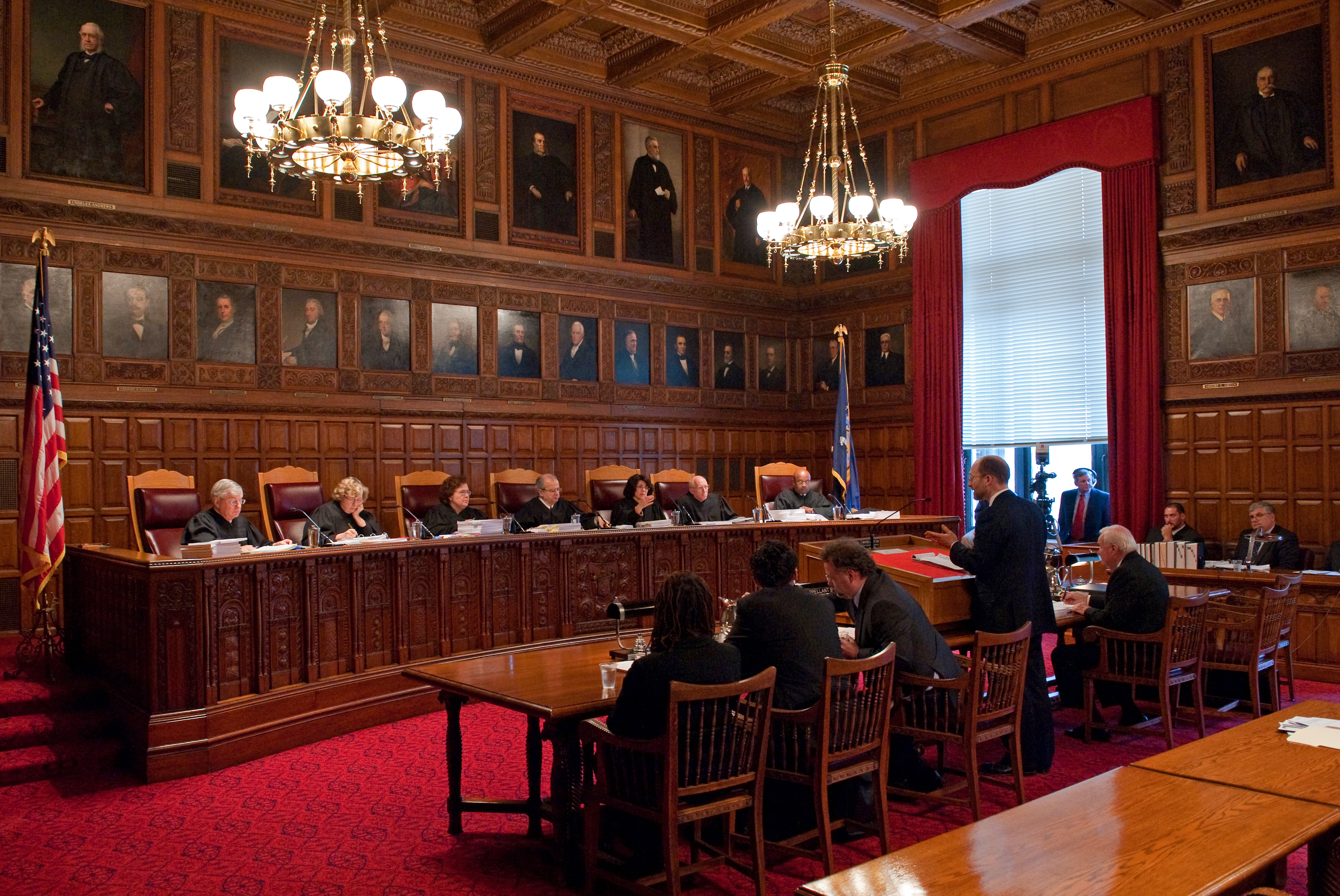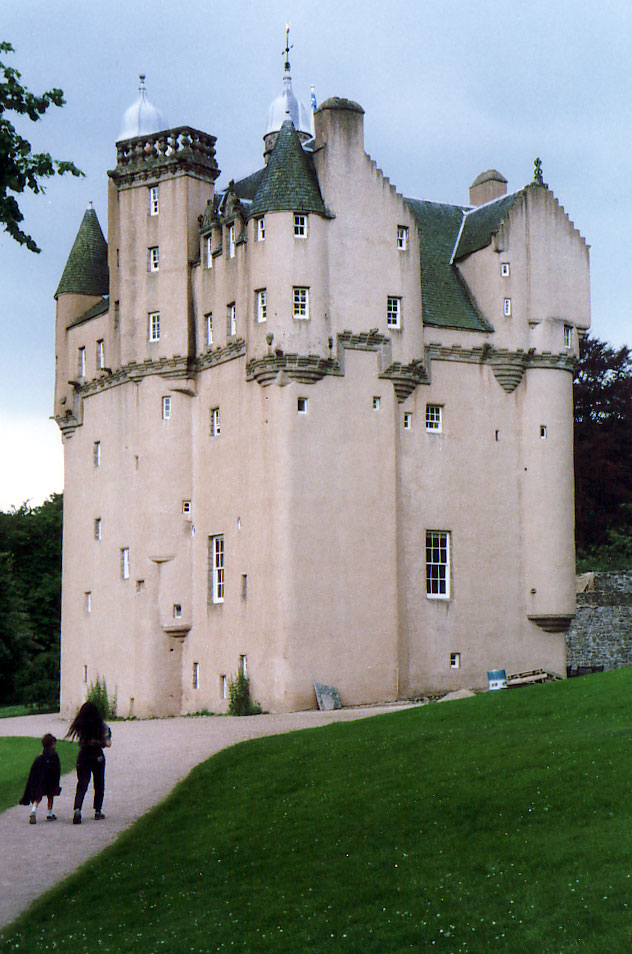|
John Hamilton, Lord Magdalens
John Hamilton, Lord Magdalens (1561–1632) was a 16th/17th century Scottish judge and Senator of the College of Justice. Life He was the son of Thomas Hamilton, Lord Priestfield, 3rd Laird of Priestfield, and his second wife, Elizabeth Murray, daughter of Sir Andrew Murray of Black Barony. His elder brothers included Thomas Hamilton, 1st Earl of Haddington and Andrew Hamilton, Lord Redhouse. He owned the Magdalens estate, east of Linlithgow. He later also had a house near Prestonpans. In July 1622 he was created a Senator of the College of Justice: an Ordinary Lord of Session. He was also Lord Clerk Register of Scotland. In 1626 he built Preston House in Preston village in East Lothian, south of Prestonpans, sometimes then called "Lord Magdalens House". The house is now called the "Hamilton House". He died at Holyrood House (prior to it becoming a royal palace) on 28 November 1632 and is buried in Holyrood Abbey. His position as Lord Clerk Register The office of ... [...More Info...] [...Related Items...] OR: [Wikipedia] [Google] [Baidu] |
Senator Of The College Of Justice
The senators of the College of Justice are judges of the College of Justice, a set of legal institutions involved in the administration of justice in Scotland. There are three types of senator: Lords of Session (judges of the Court of Session); Lords Commissioners of Justiciary (judges of the High Court of Justiciary); and the Chairman of the Scottish Land Court. Whilst the High Court and Court of Session historically maintained separate judiciary, these are now identical, and the term ''Senator'' is almost exclusively used in referring to the judges of these courts. Senators of the college use the title ''Lord'' or ''Lady'' along with a surname or a territorial name. Note, however, that some senators have a peerage title, which would be used instead of the senatorial title. All senators of the college have the honorific, ''The Honourable'', before their titles, while those who are also privy counsellors or peers have the honorific, ''The Right Honourable''. Senators are made ... [...More Info...] [...Related Items...] OR: [Wikipedia] [Google] [Baidu] |
Holyrood House
The Palace of Holyroodhouse ( or ), commonly referred to as Holyrood Palace or Holyroodhouse, is the official residence of the British monarch in Scotland. Located at the bottom of the Royal Mile in Edinburgh, at the opposite end to Edinburgh Castle, Holyroodhouse has served as the principal royal residence in Scotland since the 16th century, and is a setting for state occasions and official entertaining. The late Queen Elizabeth II spent one week in residence at Holyroodhouse at the beginning of each summer, where she carried out a range of official engagements and ceremonies. The 16th-century historic apartments of Mary, Queen of Scots, and the State Apartments, used for official and state entertaining, are open to the public throughout the year, except when members of the royal family are in residence. The Queen's Gallery was built at the western entrance to the Palace of Holyroodhouse and opened in 2002 to exhibit works of art from the Royal Collection. The gardens of the ... [...More Info...] [...Related Items...] OR: [Wikipedia] [Google] [Baidu] |
Lawyers From Edinburgh
A lawyer is a person who practices law. The role of a lawyer varies greatly across different legal jurisdictions. A lawyer can be classified as an advocate, attorney, barrister, canon lawyer, civil law notary, counsel, counselor, solicitor, legal executive, or public servant — with each role having different functions and privileges. Working as a lawyer generally involves the practical application of abstract legal theories and knowledge to solve specific problems. Some lawyers also work primarily in advancing the interests of the law and legal profession. Terminology Different legal jurisdictions have different requirements in the determination of who is recognized as being a lawyer. As a result, the meaning of the term "lawyer" may vary from place to place. Some jurisdictions have two types of lawyers, barrister and solicitors, while others fuse the two. A barrister (also known as an advocate or counselor in some jurisdictions) is a lawyer who typically specializes in a ... [...More Info...] [...Related Items...] OR: [Wikipedia] [Google] [Baidu] |
1632 Deaths
Year 163 ( CLXIII) was a common year starting on Friday (link will display the full calendar) of the Julian calendar. At the time, it was known as the Year of the Consulship of Laelianus and Pastor (or, less frequently, year 916 ''Ab urbe condita''). The denomination 163 for this year has been used since the early medieval period, when the Anno Domini calendar era became the prevalent method in Europe for naming years. Events By place Roman Empire * Marcus Statius Priscus re-conquers Armenia; the capital city of Artaxata is ruined. Births * Cui Yan (or Jigui), Chinese official and politician (d. 216) * Sun Shao (or Changxu), Chinese chancellor (d. 225) * Tiberius Claudius Severus Proculus, Roman politician * Xun Yu, Chinese politician and adviser (d. 212) Deaths * Kong Zhou, father of Kong Rong (b. 103 103 may refer to: *103 (number), the number *AD 103, a year in the 2nd century AD *103 BC, a year in the 2nd century BC * 103 (Tyne Electrical Engineers) Field S ... [...More Info...] [...Related Items...] OR: [Wikipedia] [Google] [Baidu] |
1561 Births
Year 1561 ( MDLXI) was a common year starting on Wednesday (link will display the full calendar) of the Julian calendar. Events January–June * January 31 – The Edict of Orleans suspends the persecution of the Huguenots in France. * March 1 – Kingston Grammar School is founded in England. * April 14 – The citizens of Nuremberg see what appears to be an aerial battle, followed by the appearance of a large black triangular object and a large crash (with smoke) outside the city. A ''news notice'' (an early form of newspaper) is printed on April 14, describing the event. * May 8 – Madrid is declared the capital of Spain, by Philip II. * June 4 ** The spire of Old St Paul's Cathedral in the City of London catches fire and crashes through the nave roof, probably as the result of a lightning strike. The spire is not rebuilt. ** The nobility of Harrien- Wierland and the town of Reval (on June 6) of the Livonian Order swear allegiance to Sweden. ... [...More Info...] [...Related Items...] OR: [Wikipedia] [Google] [Baidu] |
National Trust For Scotland
The National Trust for Scotland for Places of Historic Interest or Natural Beauty, commonly known as the National Trust for Scotland ( gd, Urras Nàiseanta na h-Alba), is a Scottish conservation organisation. It is the largest membership organisation in Scotland and describes itself as "the conservation charity that protects and promotes Scotland's natural and cultural heritage for present and future generations to enjoy". The Trust owns and manages around 130 properties and of land, including castles, ancient small dwellings, historic sites, gardens, coastline, mountains and countryside. It is similar in function to the National Trust, which covers England, Wales, and Northern Ireland, and to other national trusts worldwide. History The Trust was established in 1931 following discussions held in the smoking room of Pollok House (now a Trust property). The Trust was incorporated on 1 May 1931, with John Stewart-Murray, 8th Duke of Atholl being elected as its first preside ... [...More Info...] [...Related Items...] OR: [Wikipedia] [Google] [Baidu] |
St Magdalene Distillery
St. Magdalene distillery was a producer of single malt Scotch whisky that operated between 1798 and 1983. History St. Magdalene was established at least by 1798 (and possibly as early as 1765). During its early life, it was known as "Linlithgow" after the town in which it was built, and was originally located at Bonnytoun. It moved to the St. Magdalene site in 1834, to be close to the Union Canal. Before the distillery existed, the site was home to a leper colony, convent, and hospital at various points in time between the 12th century and the distillery's 18th-century founding. The distillery took its name from St Magdalene's Hospital, a lazar house which once stood upon the site. For the majority of the 19th century the distillery was run by the Dawson family, initially by Adam Dawson (1747–1836), who had trained as a maltster and was the youngest son of a sheep farmer from Kippendavie near Dunblane. Adam Dawson and his wife Frances McKell had ten children, including Jame ... [...More Info...] [...Related Items...] OR: [Wikipedia] [Google] [Baidu] |
John Hay, Lord Barra
John is a common English name and surname: * John (given name) * John (surname) John may also refer to: New Testament Works * Gospel of John, a title often shortened to John * First Epistle of John, often shortened to 1 John * Second Epistle of John, often shortened to 2 John * Third Epistle of John, often shortened to 3 John People * John the Baptist (died c. AD 30), regarded as a prophet and the forerunner of Jesus Christ * John the Apostle (lived c. AD 30), one of the twelve apostles of Jesus * John the Evangelist, assigned author of the Fourth Gospel, once identified with the Apostle * John of Patmos, also known as John the Divine or John the Revelator, the author of the Book of Revelation, once identified with the Apostle * John the Presbyter, a figure either identified with or distinguished from the Apostle, the Evangelist and John of Patmos Other people with the given name Religious figures * John, father of Andrew the Apostle and Saint Peter * Pop ... [...More Info...] [...Related Items...] OR: [Wikipedia] [Google] [Baidu] |
Holyrood Abbey
Holyrood Abbey is a ruined abbey of the Canons Regular in Edinburgh, Scotland. The abbey was founded in 1128 by David I of Scotland. During the 15th century, the abbey guesthouse was developed into a royal residence, and after the Scottish Reformation the Palace of Holyroodhouse was expanded further. The abbey church was used as a parish church until the 17th century, and has been ruined since the 18th century. The remaining walls of the abbey lie adjacent to the palace, at the eastern end of Edinburgh's Royal Mile. The site of the abbey is protected as a scheduled monument. Etymology of name Rood is a word for the cross on which Jesus Christ was crucified; thus the name Holyrood is equivalent to "Holy Cross". History Legend relates that in 1127, while King David I was hunting in the forests to the east of Edinburgh during the Feast of the Cross, he was thrown from his horse after it had been startled by a hart. According to variations of the story, the king was saved fro ... [...More Info...] [...Related Items...] OR: [Wikipedia] [Google] [Baidu] |
East Lothian
East Lothian (; sco, East Lowden; gd, Lodainn an Ear) is one of the 32 council areas of Scotland, as well as a historic county, registration county and lieutenancy area. The county was called Haddingtonshire until 1921. In 1975, the historic county was incorporated for local government purposes into Lothian Region as East Lothian District, with some slight alterations of its boundaries. The Local Government etc. (Scotland) Act 1994 later created East Lothian as one of 32 modern council areas. East Lothian lies south of the Firth of Forth in the eastern central Lowlands of Scotland. It borders Edinburgh to the west, Midlothian to the south-west and the Scottish Borders to the south. Its administrative centre and former county town is Haddington while the largest town is Musselburgh. Haddingtonshire has ancient origins and is named in a charter of 1139 as ''Hadintunschira'' and in another of 1141 as ''Hadintunshire''. Three of the county's towns were designated as ... [...More Info...] [...Related Items...] OR: [Wikipedia] [Google] [Baidu] |
Lord Clerk Register
The office of Lord Clerk Register is the oldest surviving Great Officer of State in Scotland, with origins in the 13th century. It historically had important functions in relation to the maintenance and care of the public records of Scotland. Today these duties are administered by the Keeper of the National Records of Scotland and the Keeper of the Registers of Scotland. History of Office Kingdom of Scotland The first usage of the office appears in 1288, as Clerk of the Rolls of the Kings Chapel. It later was termed in 1291 as 'Keeper of the Rolls of the Kingdom of Scotland' After the Wars of Independence, a similar office appeared with the title of 'Clerk of the Rolls', which was altered about 1373 to 'Clerk of the Rolls and Register', the 'register' being the record of charters (ie: grants of land or titles of nobility) made under the Great Seal. While the Clerk of Rolls and Register was originally responsible for the records of Chancery, Parliament and Exchequer, but as t ... [...More Info...] [...Related Items...] OR: [Wikipedia] [Google] [Baidu] |





